Featured
 Claudine Gay To Be Harvard’s 1st Black President. By Michael Casey / HuffPost
Claudine Gay To Be Harvard’s 1st Black President. By Michael Casey / HuffPost
Harvard University announced Thursday that Claudine Gay will become its 30th president, making her the first Black person and the second woman to lead the Ivy League school.
Gay, who is currently a dean at the university and a democracy scholar, will become president July 1. She replaces Lawrence Bacow, who is stepping down and has said he wanted to spend more time with family. “This is crazy, right?” a beaming Gay said as she was introduced to applause at the Smith campus center. She currently serves as the Edgerley Family Dean of Harvard’s Faculty of Arts and Sciences. A child of Haitian immigrants, Gay is regarded as a leading voice on the issue of American political participation. Among the issues she has explored is how a range of social and economic factors shape political views and voting. She also is the founding chair Harvard’s Inequality in America Initiative, which studies issues like the effects of child poverty and deprivation on educational opportunity and American inequality from a global perspective. Read more
Related: Who Is Harvard’s New President, Claudine Gay? By Nyamekye Daniel / Atlanta Black Star
Political / Social
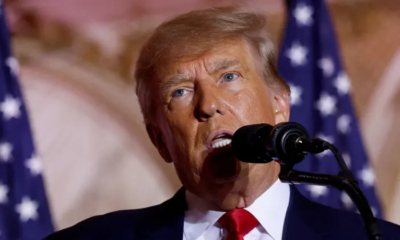 Is Trump finally politically dead? Sort of. By Robert Reich / The Guardian
Is Trump finally politically dead? Sort of. By Robert Reich / The Guardian
Republican lawmakers know Trump is unpopular – but some feverishly pro-Trump voters have the party in a bind
As Congress ends its first post-Trump term, the biggest political question hanging over America is: When will the Republican party finally reach its anti-Trump tipping point – when a majority of Republican lawmakers disavow him? Again and again, it looks like the tipping point is near but the party remains under Trump’s thumb. The only hope for the Republican party is that Trump is opposed in the 2024 presidential primaries by just one opponent – most obviously Florida’s Ron DeSantis – who becomes the alternative for the majority of Republican voters who don’t particularly want Trump to be their standard bearer. Read more
Related: A prayer before dying: On the Republican Party’s terminal illness. By Rich Logis / Salon
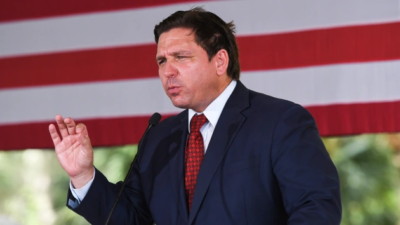 DeSantis Officials Finally Tell Us What “Woke” Means. By Abigail Weinberg / Mother Jones
DeSantis Officials Finally Tell Us What “Woke” Means. By Abigail Weinberg / Mother Jones
The question of the meaning of the word came up during a Florida trial over the potential reinstatement of Democratic State Attorney Andrew Warren.
Asked what “woke” means more generally, [Desantis’ General Counsel Ryan] Newman said “it would be the belief there are systemic injustices in American society and the need to address them.” Newman added that DeSantis doesn’t believe there are systemic injustices in the U.S. He also emphasized he believed Warren’s “wokeism” led him to sign the pledge not to prosecute abortion crimes, the primary factor that led to his suspension. Read more
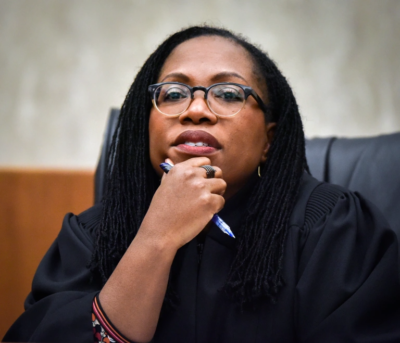 How Justice Jackson Is Talking About Race on the Supreme Court. By Christina Carrega / Capital B
How Justice Jackson Is Talking About Race on the Supreme Court. By Christina Carrega / Capital B
With affirmative action and racial gerrymandering on the agenda, the court’s first Black female justice is challenging the conservative majority.
In her first weeks on the high court, Jackson wrote dissenting opinions in support of two Black men on death row. She provided a history lesson on the “race-conscious” creation of the 14th Amendment during arguments over gerrymandering in Alabama. And she directly challenged an attorney’s arguments against considering racial diversity in college admissions. “All of these cases that are talking about rights, access, representation, ability for care — they’re all directly disproportionately affecting African American people,” said Ada Goodly Lampkin, director of the Louis A. Berry Institute for Civil Rights and Justice at Southern University Law Center. Read more
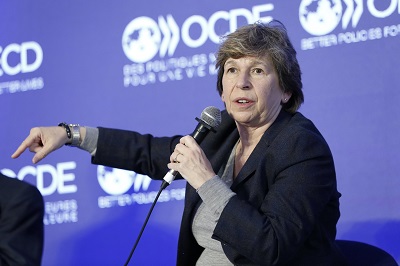 Interview: Randi Weingarten Explains Why Most People Are Pro Public Education. By Glenn Daigon The Progressive
Interview: Randi Weingarten Explains Why Most People Are Pro Public Education. By Glenn Daigon The Progressive
The American Federation of Teachers president on the midterms’ impact on education, the culture wars in schools, and what the future holds.
Rightwing operatives anticipated that attacking public schools would be a key strategy for vaulting Republican candidates into victories. But during the recent midterms, pro-public-education candidates often fared better than expected. The Progressive spoke with American Federation of Teachers President Randi Weingarten on the impact of the midterm elections on public schools. This is an edited transcript. Read more
Related: Kentucky Supreme Court strikes down school choice provisions. By Bruce Schreiner / AP News
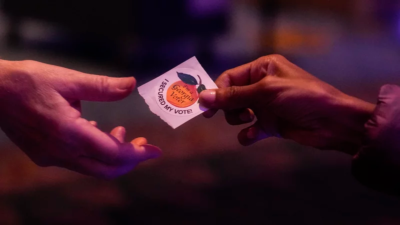 Georgia elections show the state may be more purple than before. By Sam Gringlas / NPR
Georgia elections show the state may be more purple than before. By Sam Gringlas / NPR
Two years ago, Democratic candidates for president and Senate won Georgia for the first time in years. Then this November, Republicans swept every statewide race except for the Senate, where Democratic Sen. Raphael Warnock prevailed in a runoff last week.
Republicans still dominate the state government in Georgia. And in the U.S. Senate runoff, Republican football legend Herschel Walker lost by less than 3 points, despite his flaws as a candidate, including allegations of domestic abuse, a propensity for making false claims and his loose grasp of policy. “We need to be cautious about looking at behavior in this runoff election and trying to extrapolate other things from it, in part because Herschel Walker was such a unique candidate,” Gillespie says. Read more
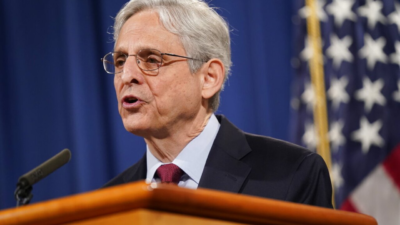 Garland moves to end disparities in crack cocaine sentencing. By Lindsay Whitehurst / ABC News
Garland moves to end disparities in crack cocaine sentencing. By Lindsay Whitehurst / ABC News
Attorney General Merrick Garland has taken action to end sentencing disparities that have imposed harsher penalties for different forms of cocaine and worsened racial inequity in the U.S. justice system.
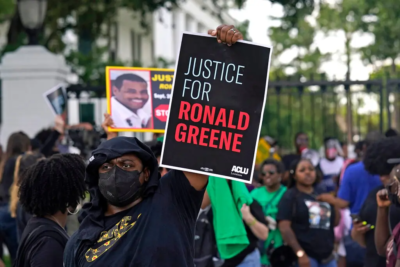 What We Know About Ronald Greene’s Death. By NYT
What We Know About Ronald Greene’s Death. By NYT
The Louisiana State Police said Mr. Greene died in 2019 after crashing during a police chase, but video later showed troopers shocking, choking and beating him. Five officers have now been charged.
Mr. Greene, 49, lived in Monroe, La. He was married, worked as a barber, and had reportedly gone into remission after battling cancer for two years. He was on his way to meet his wife in Florida when he was pulled over just after midnight on May 10, 2019, by state troopers in Union Parish, east of Shreveport in northern Louisiana. Read more
Related: 5 Louisiana officers charged in death of Black motorist Ronald Greene. By CBS News
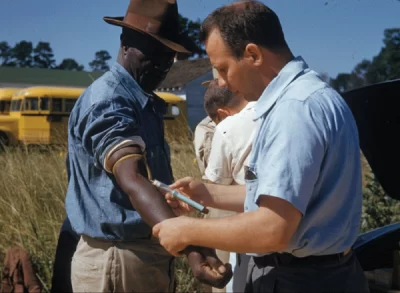 Racist Doctors and Organ Thieves: Why So Many Black People Distrust the Health Care System. By Joanne Kenen and Elaine Batchlor / Politico
Racist Doctors and Organ Thieves: Why So Many Black People Distrust the Health Care System. By Joanne Kenen and Elaine Batchlor / Politico
Shown are Participants in the Tuskegee Syphilis Study. NARA; Photographs by Cheriss May for POLITICO
The case of the “The Organ Thieves,” as local writer Chip Jones entitled his 2020 book about it, is not broadly known outside Richmond. But it is one of countless incidents across the decades of abusive and exploitative practices directed at, or performed on, Black Americans in the name of science. The most famous, of course, is the “Tuskegee Experiment,” where the government conducted a 40-year study that withheld treatment for syphilis from Black men. With that kind of history, it should not be surprising that there is still broad distrust in the Black community toward medical professionals. As recently as October 2020, a poll by the Kaiser Family Foundation and Undefeated found 70 percent of Black Americans believe people seeking care are treated unfairly based on race or ethnicity. Read more
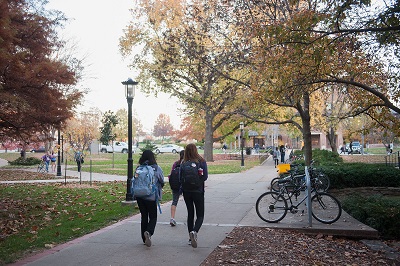 Early decision programs openly stack the college admissions deck. By and Dannenberg / CNN
Early decision programs openly stack the college admissions deck. By and Dannenberg / CNN
This month, Ivy League and other “elite” colleges are sending offers of admission to successful students who applied through non-binding “early action” or through “early decision,” by which students pledge to attend a prospective school if accepted.
The joy that these disproportionately White and overwhelmingly affluent families will share across social media will mask the less visible suffering of students who didn’t participate in the process, either because they didn’t know about it or couldn’t afford to. Other admission practices, such as the legacy preference for children of alumni, may more openly stack the deck in favor of the wealthy, but none is as pervasive as the opaque early decision system, through which elite colleges fill as much as two-thirds of their classes. Read more
Related: The student loan company that could topple Biden’s debt relief plan. By Michael Stratford / Politico
 Meghan Markle thought being biracial could protect her from racism. She was wrong. By Nylah Burton / Andscape
Meghan Markle thought being biracial could protect her from racism. She was wrong. By Nylah Burton / Andscape
In the new docuseries ‘Harry & Meghan,’ the Duchess of Sussex finally gets real about race
In the six-part Netflix docuseries Harry & Meghan — which is more akin to a highly-produced home movie due to Prince Harry and Meghan’s complete creative control — the former Meghan Markle opens up a bit more about her thoughts on her biracial identity and her experiences with racism. But what she shares hints at a deeper internalized racism and colorism that has yet to be meaningfully addressed by the Duchess of Sussex, even as she spreads awareness about the horrendous racism she endured at the hands of the British press and the British royal family. Read more
Related: ‘Harry & Meghan’ wrestles with lingering impact of racism and colonialism. By , and
Ethics / Morality / Religion
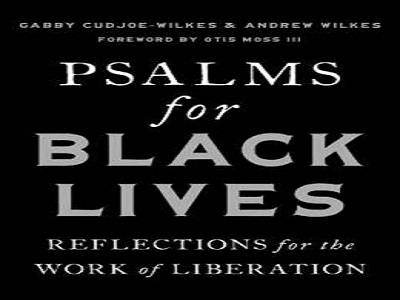 New devotional book centers the liberation of Black lives as a sacred matter. By Nicole E. Symmonds / NCR
New devotional book centers the liberation of Black lives as a sacred matter. By Nicole E. Symmonds / NCR
In the summer of 2020, many took to the streets armed with righteous indignation against the white supremacist brutality and violence against Black people far too commonly found in North America.
That summer created more activists and people with hearts burning to love justice, seek mercy and walk humbly with God on behalf of the historically underrepresented, marginalized and disenfranchised. This was the summer when pastors Gabby Cudjoe-Wilkes and Andrew Wilkes conceived Psalms for Black Lives: Reflections for the Work of Liberation. Psalms for Black Lives: Reflections for the Work of Liberation is a 30-day devotional book that takes individual readers through the many dimensions of the Psalms, inviting the reader to celebrate, lament, envision and be emboldened to act. Read more
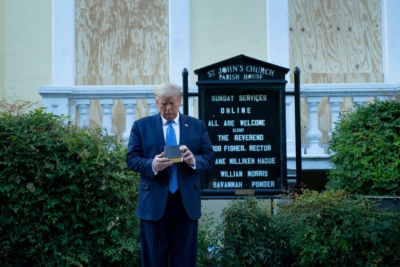 The Anti-Woke Right Is Losing Its Religion. By Charlotte Kilpatrick / The New Republic
The Anti-Woke Right Is Losing Its Religion. By Charlotte Kilpatrick / The New Republic
As conservatives increasingly turn to secular culture-war outrages to fire up their base, it would seem that God is no longer their co-pilot.
If a single image could encapsulate the Trump era, perhaps it is the infamous photo of the former president standing alone on a sidewalk in front of a boarded-up church with a stern expression and a Bible in his hand. But there was one thing that Trump did not do that day. Surprisingly for a man standing near a church holding a Bible, he never actually prayed. Instead, once his brief remarks had concluded, he turned from the camera and walked home, the Bible with which he’d burdened himself serving merely as a prop, attesting to the president’s fervor for authoritarianism, rather than his Christian values. Read more
Related: A mass exodus from Christianity is underway in America. Here’s why. By Suzette Lohmeyer and Anna Deen / Grid News
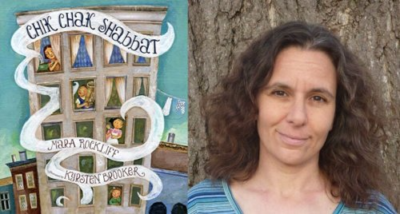 Why a Florida school district banned a book about Shabbat. By Jeffrey Salkin / Religion News
Why a Florida school district banned a book about Shabbat. By Jeffrey Salkin / Religion News
“Chik Chak Shabbat,” written by Mara Rockliff, right, and illustrated by Kyrsten Brooker, not pictured. Images courtesy of Amazon.com
If you have the blessing of visiting Duval County, Florida (Jacksonville), and if you have the additional blessing of visiting the local school libraries, you will notice gaps in the shelves. Those gaps represent 176 books that are no longer on the shelves. The list of banned books includes stories of people who are Hispanic, LGBTQ, Asian, Muslim, Black and Native American, among others. Oh, yes. There is one more group. Jews who observe Shabbat. Read more
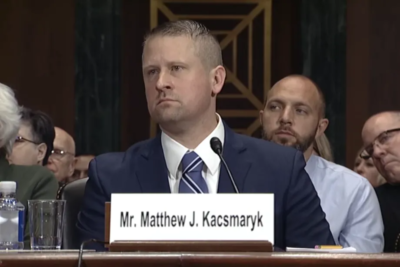 Trump Judge Matthew Kacsmaryk, the Christian right activist who thinks he is king. By Ian Millhiser / Vox
Trump Judge Matthew Kacsmaryk, the Christian right activist who thinks he is king. By Ian Millhiser / Vox
A rule governing federal courts in Texas turned a former lawyer for the religious right into one of the most powerful people in the United States.
Thanks to an obscure rule governing which federal judges are assigned to hear cases in Texas federal courts — 95 percent of civil cases filed in Amarillo, Texas’s federal courthouse are automatically assigned to Kacsmaryk — this prurient man is now one of the most powerful public officials in the United States. Any conservative interest group can find a federal policy they do not like, file a legal complaint in the Amarillo federal courthouse challenging that policy, and nearly guarantee that their case will be heard by Kacsmaryk. Many of Kacsmaryk’s decisions are so poorly reasoned that they can be rebutted in just a couple of sentences. Read more
 Religious liberty has a long and messy history. By James Hudnut-Beumler and James P. Byrd / Vanderbilt Magazine
Religious liberty has a long and messy history. By James Hudnut-Beumler and James P. Byrd / Vanderbilt Magazine
At the close of its recent term the Supreme Court ruled on the cases of Carson v. Makin and Kennedy v. Bremerton School District, rekindling controversy over one of the most enduring issues in American history: religious liberty. Another of this term’s blockbuster decisions, Dobbs v. Jackson Women’s Health Organization, underlines the fact that religious beliefs and actions in the public realm matter. Whether the issue concerns religion and education, prayer or reproduction, Americans feel strongly about their religious liberties. Read more
Historical / Cultural
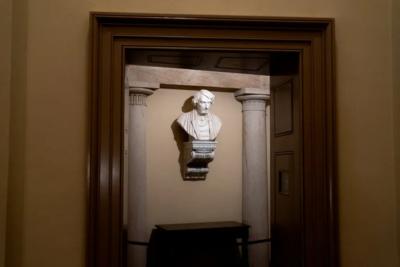 Congress Set to Replace Dred Scott Author’s Statue With Thurgood Marshall. By Luke Broadwater / NYT
Congress Set to Replace Dred Scott Author’s Statue With Thurgood Marshall. By Luke Broadwater / NYT
A bill passed Wednesday would require officials to remove a statue of Justice Roger Brooke Taney, who wrote the racist Dred Scott decision, from its place on the Senate side of the Capitol. Shown is a bust of Roger B. Taney in the Old Supreme Court Chamber.
The legislation, sponsored by Senator Benjamin L. Cardin, Democrat of Maryland, passed the House by a voice vote after it passed the Senate last week without a recorded vote, a procedure used for bills to which nobody objects. It now advances to President Biden’s desk for his signature. It was a significant victory for lawmakers who have tried for years to remove Confederate statues and other symbols of racism from the Capitol, and an example of how quickly legislation can move through Congress in a bipartisan manner during a so-called lame-duck session after the year’s political campaigns have ended. Read more
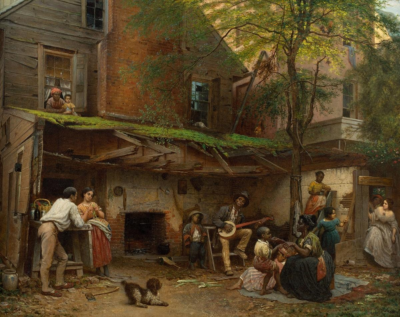 How an abolitionist painting set in D.C. became proslavery propaganda. By Kristina Gaddy / Wash Post
How an abolitionist painting set in D.C. became proslavery propaganda. By Kristina Gaddy / Wash Post
Shown is “Negro Life at the South,” an 1859 oil painting by Eastman Johnson that was later known as “My Old Kentucky Home” and used as proslavery propaganda. (Collection of the New-York Historical Society)
Not everyone was celebrating the March 1857 inauguration of James Buchanan. In the alleys behind some of those rowhouses, artist Eastman Johnson had spent time with people who were less than pleased about the election of a proslavery Democrat. Slavery was still legal in the capital, and all Johnson had to do to witness it was visit the interior yard of his father’s home on F Street NW. Johnson’s painting of a group of enslaved people in that yard would launch his career. But although Johnson, an abolitionist, intended the scene to humanize African Americans, the artwork would go on to be used as proslavery propaganda. Read more
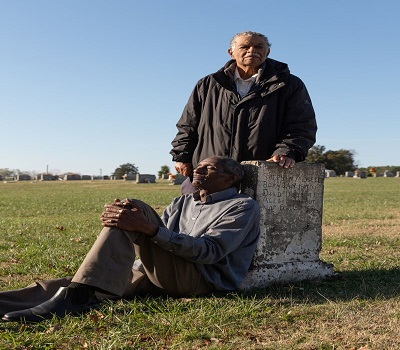 How Authorities Erased a Historic Black Cemetery in Virginia. By Seth Freed Wessler / Propublica
How Authorities Erased a Historic Black Cemetery in Virginia. By Seth Freed Wessler / Propublica
Mike and David Moseley visit the gravestone of one of their ancestors, Stephen Moseley. Credit:Christopher Smith, special to ProPublica
Nobody working to bring a $346 million Microsoft project to rural Virginia expected to find graves in the woods. But in a cluster of yucca plants and cedar that needed to be cleared, surveyors happened upon a cemetery. The largest of the stones bore the name Stephen Moseley, “died December 3, 1930,” in a layer of cracking plaster. Another stone, in near perfect condition and engraved with a branch on the top, belonged to Stephen’s toddler son, Fred, who died in 1906. Read more
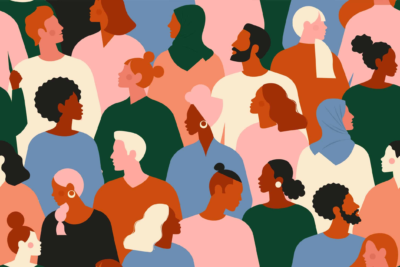 What’s the difference between race and ethnicity? Looking beyond the labels. By Tibi Puiu / ZME Science
What’s the difference between race and ethnicity? Looking beyond the labels. By Tibi Puiu / ZME Science
Race is a very weak proxy for genetic diversity. It’s something we could do without.
The concepts of race and ethnicity can be difficult to untangle, not to mention contentious, with many different definitions and interpretations. At their core, race and ethnicity describe the ways in which people are grouped based on certain physical and cultural characteristics. While race and ethnicity are often used interchangeably, they have distinct differences that are important to understand. Read more
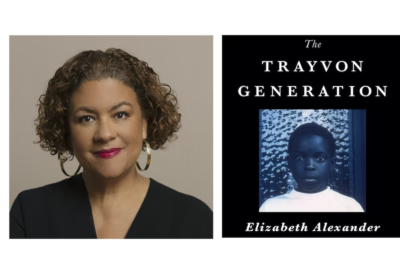 In the Face of Black Pain, Elizabeth Alexander Turns to Art. By Michell S. Jackson / NYT
In the Face of Black Pain, Elizabeth Alexander Turns to Art. By Michell S. Jackson / NYT
“The Trayvon Generation” traces the influences of racism and violence on American culture today.
Dressed in an indelible red coat, Elizabeth Alexander stood aloft the National Mall and faced a sea of expectant faces. Behind her, a platform seated rows upon rows of eminences, including President Barack Obama. In her inaugural poem Alexander likened love to light and closed with lines that bespoke the optimism of the occasion: “On the brink, on the brim, on the cusp,/praise song for walking forward in that light.” Read more
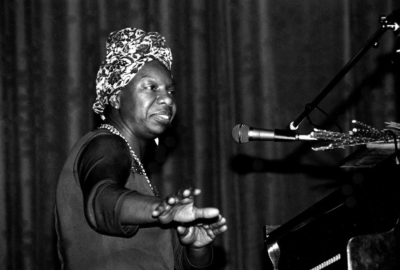 The Untethered Tongue: Lifting the Black Feminine Voice in Jazz. By Sandra Booker / AAIHS
The Untethered Tongue: Lifting the Black Feminine Voice in Jazz. By Sandra Booker / AAIHS
Nina Simone, Brittany, France, 1982 (Wikimedia Commons)
What is freedom? Freedom is existing unrestrained in thoughts, actions, and achievements but is not absolved from the world’s reactions to either. The American Dream is free from the constraints imposed on those not of the privileged set. Legendary jazz singer/composer/arranger and social activist Nina Simone said, “freedom is having no fear.” What does it mean to be seen, heard, and even felt, in a society, relentless in its posture that the minority, individually and collectively, are inferior, except for the skills and talents they possess and exhibit? Read more
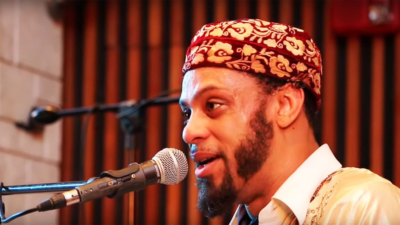 Black Music Sunday: For Hanukkah, let’s enjoy some kosher gospel with Joshua Nelson. By Denise Oliver Velez / Daily Kos
Black Music Sunday: For Hanukkah, let’s enjoy some kosher gospel with Joshua Nelson. By Denise Oliver Velez / Daily Kos
Jewish people around the world will light the first candle of Hanukkah on Sunday night. So for today’s Black Music Sunday, let’s explore and share the music and inspiration of Joshua Nelson, a Jewish Black American.
As the forces of hate, white supremacy, and antisemitism are out in the open and fanned by the vitriol spewed from the mouths of both former and current Republican elected officials (including a has-been POTUS, the talking heads on multiple wingnut broadcast and social media outlets, and a rapper who has been uninvited from the Black BBQ), there are people who have been and are currently fighting the ugliness by building bridges. Some do it with music. Joshua Nelson is one of them. Read more
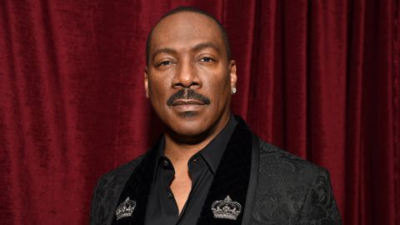 Eddie Murphy to be honored with the Cecil B. DeMille Award at Golden Globes. By Chloe Metas / CNN
Eddie Murphy to be honored with the Cecil B. DeMille Award at Golden Globes. By Chloe Metas / CNN
“We’re honored to present this year’s Cecil B. DeMille Award to the iconic and highly esteemed Mr. Eddie Murphy,” HFPA President, Helen Hoehne said in a statement. “We’re thrilled to be celebrating the lasting impact on film and television that his career – in front of and behind the camera – has had through the decades.” Murphy has starred in films like “48 Hours,” “Trading Places,” “Beverly Hills Cop,” “Coming to America,” “The Nutty Professor” and “Dreamgirls.” The ceremony, which was not broadcast last January over controversy surrounding the HFPA, will return to NBC on Jan. 10. Comedian Jerrod Carmichael will host. Read more
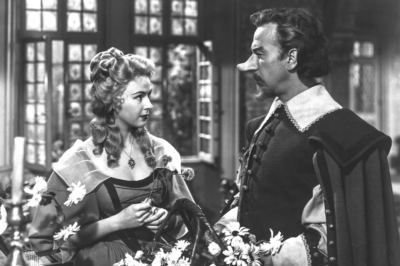 Two influential films for Latinos are inducted into the National Film Registry. By Nicole Acevedo / NBC News
Two influential films for Latinos are inducted into the National Film Registry. By Nicole Acevedo / NBC News
Shown is Mala Powers and José Ferrer in “Cyrano de Bergerac,” 1950.Library of Congress
The list of Latino films inducted into the National Film Registry at the Library of Congress grew a bit longer Wednesday. “Cyrano de Bergerac” and “The Ballad of Gregorio Cortez” are among the 25 influential films added to the registry this year for preservation by the National Film Preservation Board. Every year the board selects 25 films to add to the registry based on its historical, cultural and aesthetic contributions. Read more
 “Avatar: The Way of Water,” Reviewed: An Island Fit for the King of the World. By Richard Brody / The New Yorker
“Avatar: The Way of Water,” Reviewed: An Island Fit for the King of the World. By Richard Brody / The New Yorker
Set more than a decade after the events of the first film, “Avatar: The Way of Water” begins to tell the story of the Sully family (Jake, Neytiri, and their kids), the trouble that follows them, the lengths they go to keep each other safe, the battles they fight to stay alive, and the tragedies they endure.
For all its sententious grandiosity and metaphorical politics, “The Way of Water” is a regimented and formalized excursion to an exclusive natural paradise that its select guests fight tooth and nail to keep for themselves. The movie’s bland aesthetics and banal emotions turn it into the Club Med of effects-driven extravaganzas. Now in theaters Read more
Related: Watch “Avatar: The Way of Water | Official Trailer” on YouTube.
 Even More of Michelle Obama’s Best Book Tour Looks. By Angela Johnson / The Root
Even More of Michelle Obama’s Best Book Tour Looks. By Angela Johnson / The Root
When it comes to fashion, the Former First Lady never disappoints. ATLANTA, GEORGIA – DECEMBER 02: Former First Lady Michelle Obama speaks onstage during the Michelle Obama: The Light We Carry Tour at The Fox Theatre on December 02, 2022 in Atlanta, Georgia.
When it comes to fashion, Former First Lady Michelle Obama never disappoints. Whether she’s rocking something off the rack from J. Crew or designer duds from the latest Versace collection, she knows what looks best on her, and she’s not afraid to push the envelope. And her style has only become edgier since she left the White House. Read more
Sports
 North Carolina Central wins Celebration Bowl, spoils Jackson State’s perfect season. By Mia Berry / Andscape
North Carolina Central wins Celebration Bowl, spoils Jackson State’s perfect season. By Mia Berry / Andscape
North Carolina Central quarterback Davius Richard (left) watches head coach Trei Oliver hoist the game trophy after the Eagles defeated Jackson State 41-34 in the Cricket Celebration Bowl on Dec. 17 at Mercedes-Benz Stadium in Atlanta. Brett Davis/ESPN Images
Exactly six years after North Carolina Central left the Celebration Bowl in tears after a one-point loss to Grambling State, coach Trei Oliver and the Eagles left Mercedes-Benz Stadium on Saturday with a happier outcome. The Eagles (10-2) spoiled Jackson State’s (12-1) perfect season, defeating the Tigers 41-34 in overtime to earn the program’s first Celebration Bowl title. North Carolina Central quarterback Davius Richard, the Mid-Eastern Athletic Conference (MEAC) offensive player of the year, led the way for the Eagles, completing 15 of 20 passes for 177 yards and one touchdown. Richard also was the team’s second-leading rusher, running for 97 yards and two touchdowns on the ground.
Related: Deion Sanders won big for HBCU football, even without winning title. By Jarrett Bell / USA Today
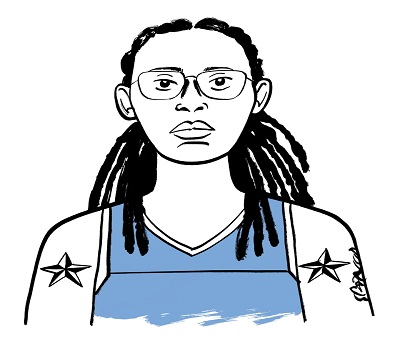 Brittney Griner and the Role of Race in Diplomacy. By Jelani Cobb / The New Yorker
Brittney Griner and the Role of Race in Diplomacy. By Jelani Cobb / The New Yorker
 For Chris Paul, Studying at an H.B.C.U. Was a ‘Natural’ Fit. Ganguli / NYT
For Chris Paul, Studying at an H.B.C.U. Was a ‘Natural’ Fit. Ganguli / NYT
Paul, the star N.B.A. guard, will graduate from Winston-Salem State on Friday, completing an educational journey he started in 2003 and continuing his quest to spotlight Black colleges.
On Friday, Paul, 37, will graduate from Winston-Salem State. The Suns will have an off day after completing a four-game road trip, so he will fly to North Carolina to wear a cap and gown and walk in the ceremony. Paul started pursuing a bachelor’s degree in 2003 at Wake Forest University, but he left for the N.B.A. after two years. To finish his degree, he chose the nearby Winston-Salem State — a historically Black university that both of his parents attended. It is part of his quest to bring attention and resources to historically Black colleges and universities. Read more
Site Information
Articles appearing in the Digest are archived on our home page. And at the top of this page register your email to receive notification of new editions of Race Inquiry Digest.
Click here for earlier Digests. The site is searchable by name or topic. See “search” at the top of this page.
About Race Inquiry and Race Inquiry Digest. The Digest is published on Mondays and Thursdays.
Use the customized buttons below to share the Digest in an email, or post to your Facebook, Linkedin or Twitter accounts.